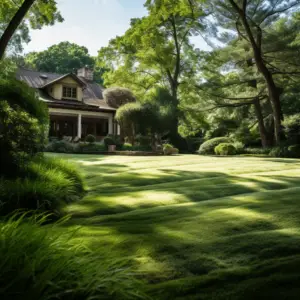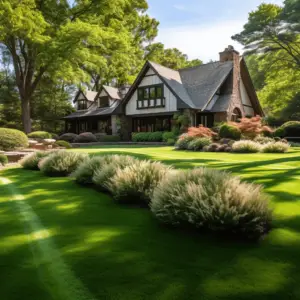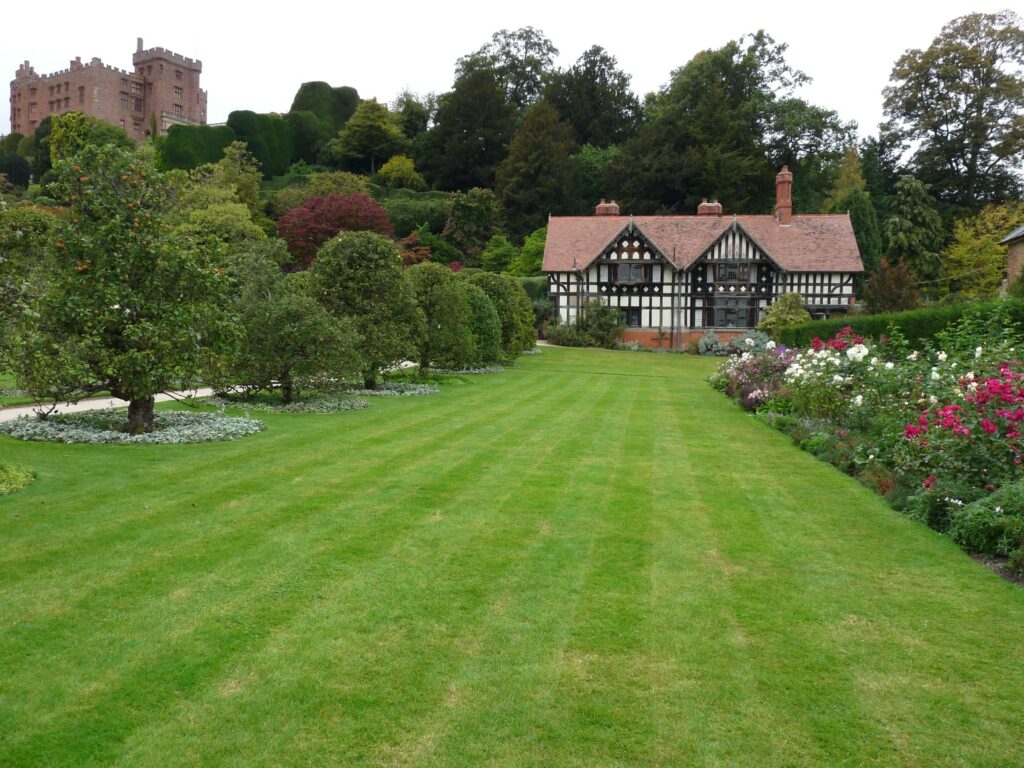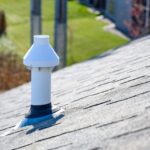Dethatching and Aftercare, Thatch can be a beneficial and healthy element of your lawn. Dethatching isn’t required for every grass. However, if thatch builds up too thickly, it might stifle good turf development. When this happens, it’s likely time to dethatch. Dethatching is a do-it-yourself project.
However, if the thatch is particularly thick, it may be essential to contact specialists to remove it. After dethatching, the lawn might occasionally look bad. However, this does not have to be the case.
In this post, we’ll go over some of the best ways to keep your lawn looking great even after it’s been dethatched.
Table of Contents
What is Thatch, and why is It Bad?

Thatch is an inevitable component of maintaining healthy grass. You can see where the thatch is if you dig a cross-section of your lawn using a shovel. Between the soil and the green section of your turf plant, thatch is a layer of dead and living organic materials that build up.
This layer is also composed of water and disintegrates quickly. However, some materials disintegrate more slowly than others, and thatch develops when organic material accumulates faster than it can decompose.
Thatch should be less than half an inch thick in a healthy lawn. This thin covering, similar to a thin layer of mulch, helps your lawn retain water. It can also shield the soil beneath it from large temperature swings, which is good for your turf roots.
Nutrients, water, and fertilizer can penetrate and reach the roots of the plants as long as the thatch layer remains thin.
When the thatch becomes too thick, though, it might create an issue. It blocks the passage of air, water, and nutrients to the soil below. Irrigation water can also be held in thick thatch.
The water might suffocate the plant roots if the thatch becomes saturated. Moisture also provides an ideal habitat for fungus and other diseases to thrive.
Worst of all, plant roots may not penetrate if the thatch layer becomes too thick, and the roots will develop totally within the thatch layer. This makes them susceptible to overwatering, drought, and other forms of stress.
It becomes challenging to remove the thatch without injuring the turf once it has grown so thick that now the turf is rooted in it. Your only alternative is to dethatch your lawn at some point.
Lawn Looks Bad After Dethatching: What could be the Problem?
Here are several common issues that might make your lawn appear terrible after dethatching.
Lawn Appears Brown
In most cases, this is due to early dethatching. If you dethatch your lawn too early in the season, your soil will turn brown owing to the lack of protection it requires.
Grass Looks like It’s Breaking or Has Turned into Mush
This can be caused by excessive fertilizer use or poor spacing when using an electric dethatcher.
Lawn Looks Yellow
A common concern in modern lawns is a brilliant green sedge that borders on yellow. When thatches are removed, these weeds take on the appearance of grass and thrive even better.
A targeted fertilizer application, overseeding, and frequent mowing should help slow their growth for the following few months. You can also use acidic solutions. The reaction to the chemicals, on the other hand, is determined by the seed variety in your lawn.
Lawn Looks Patchy
The patchiness that appears after dethatching reflects the soil’s natural state, which is okay. To combat this, the dethatching process includes a layer of overseeding.
Turf Quality Decrease
Thatch layers that are so thick are more nutrient-dense than the soil itself. Because that’s where most of the nutrients are, probably, the grassroots climbed upwards rather than downwards.
What to Do After Dethatching Your Lawn
Below are some things you can do after you’ve dethatched your lawn:
Aerate.
After dethatching, aerating your lawn helps to open up the soil pores and encourage root growth. Additionally, aerating can aid in the reduction of patchiness.
It’s a good idea to aerate after dethatching. Dethatching and Aftercare prevents the aeration process from being impeded by dead grass. Your grass should be aerated at least once a year.
Overseed
Overseeding is the process of layering grass seeds on top of your existing seedlings. The sort of seeds you use for overseeding determines the health of your grass. Dethatching and Aftercare is recommended that you test your soil first and then plant seeds based on the results. Also, the overseeding variety should be a shade darker than your original match.
Dethatching and Aftercare also a good idea to acquire disease-resistant, high-germination seeds, as the grass on an established lawn tends to germinate less.
Water
The soil now has a lower level of protection. It is necessary to water to keep the soil moist. Irrigation is critical while dethatching throughout the summer.
Sprinkling is less preferred than deepwater application. This is since drenching promotes root growth.
Fertilize
To get the best effects, fertilization before winter is recommended. Go gentle on the herbicides since overseeding germination can reduce. You can administer urea or nitrogen to support the recovering roots.
What to Do With Thatch after Dethatching

Compost
Instead of discarding your thatch, compost it and then till it into the soil as mulch. This prevents cross-contamination and saves you money that you would have spent on manure.
Dispose It of with Proper Care
If you decide to dispose of your thatch, make sure you do it safely. This is because thatch carries living weed seeds that can harm the soil. As a result, never dispose of thatch without adequate care.
How to Prevent Thatch Buildup Later
Irrigate Deeply, Not Frequently
Some grass species necessitate deep irrigation rather than frequent watering. Deep irrigation also drives the roots downward, away from the thatch layer, rather than upward.
Use Organic Fertilizers
The usage of organic fertilizers will slow down the growth of vegetation.
Make a note of the Date.
Summer turf should be dethatched in late spring, whereas winter turf should be dethatched in early fall. The timing is designed to benefit the overseed variety while also ensuring that the grass and soil can withstand the stress of dethatching.


